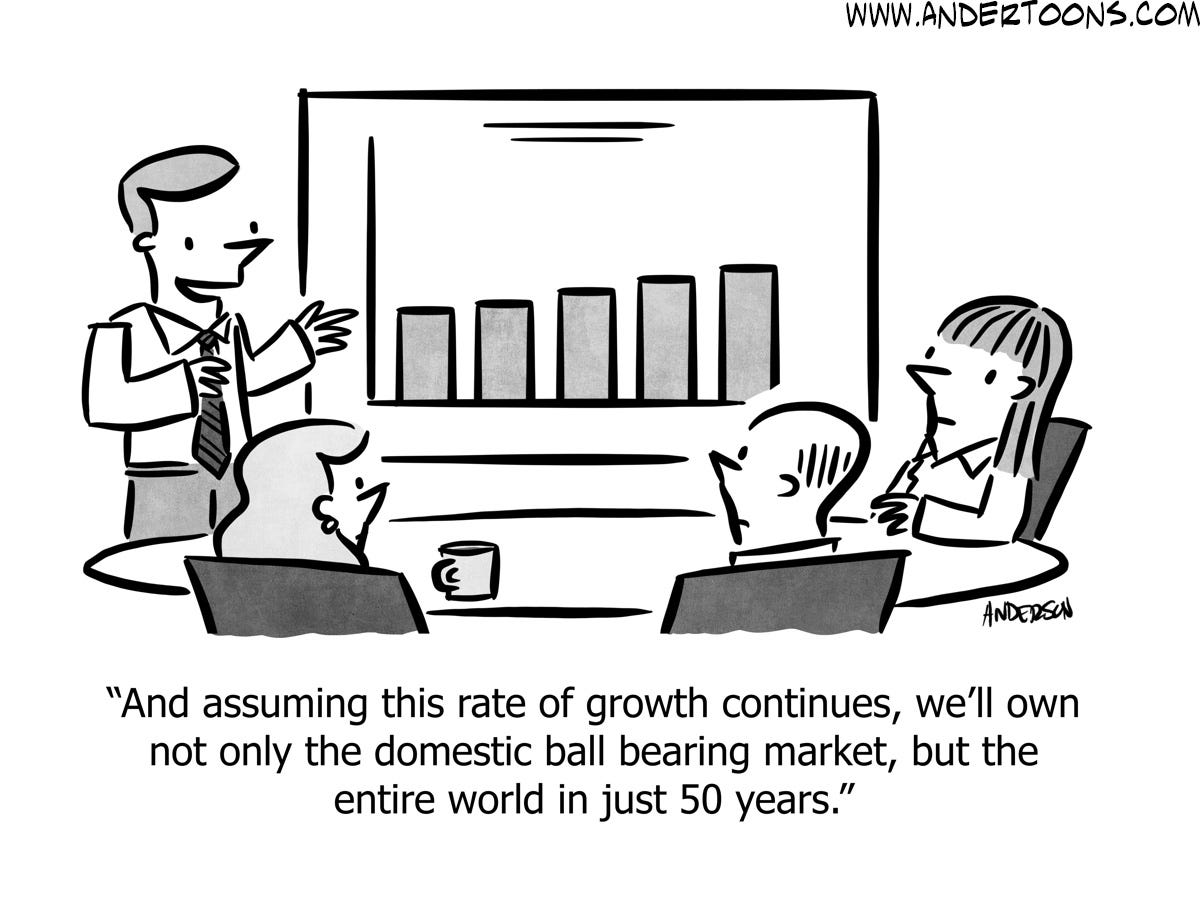Burning the VC Rulebook
When to Trust Their Insights and When to Run Your Own Playbook
A while back, I was working with a startup making tens of millions of revenue a year. Eventually, they got acquired and the founders took home hundreds of millions of dollars. Each.
And yet, this company was never considered “VC Fundable.”
Recently, Linear’s Karri Saarinen sparked an important conversation in his post The Profitable Startup, arguing that profitability isn't the opposite of ambition, but a way to control your destiny and grow on your own terms.
His point resonated with me because while the bootstrapped founders I'd worked with had taken a different path (Linear did raise a good chunk of money), their focus on profits and sustainable growth sounded very similar. It also reminded me how I had tried to make the company fit the mold of my other VC-funded clients, and failed.
The company I worked with was one of the most profitable startups I had ever seen up close, boasting NVIDIA-like Free Cash Flow Margins while delivering 60% year-over-year growth. Forget Rule of 40, more like Rule of 100.
I’d been brought in to give them better visibility into their financials, and we’d settled into a monthly cadence of updating forecasts, analyzing key SaaS metrics, and comparing results against previous projections.
I felt I needed to prove myself more, so I told the founders that their gross margins, sitting at a mere 70%, were too low. When I confidently suggested that they need to hit 85% to match SaaS industry benchmarks, which would mean cutting back on customer support over time, I was shocked when they shot me down.
Their CEO said (paraphrased):
“Look, we’re not going to touch our support to hit some arbitrary margin target. We’re known for our amazing support and our business wouldn’t be the same without it.”
This was the first time I realized that my thought process was driven by VC-focused advice, and that was leading me to make outrageous suggestions for my profit-focused clients.
VC Advice ≠ Profitable Startup Needs
Despite how lucrative the acquisition was for the founders, an outcome of hundreds of millions wouldn’t have been a big enough goal for any but the earliest-stage VCs. Sure, if they called around Sand Hill Road the month before their acquisition someone would have picked up, but overall, their 60% YoY growth would have been too slow for VCs to get seriously interested.
Given VCs are in the business of helping founders build an attractive company for some other company to buy, why is it that their advice doesn’t always apply? Or worse, when can it be actively harmful? My advice of boosting the gross margins might have ended the company as we know it.
This all comes down to the VC Playbook breaking down unless the company is 100% on the VC track. I'm not talking about founders who raised one round or who “feel committed” to the VC path, but who are able to stay on that track year after year, raise after raise.
To make their business model work, VCs need their portfolio companies to hit 10-100x returns and target $1bn+ markets. Year-over-year (YoY) revenue growth is a strong proxy to assess whether a startup can ever reach that scale, and these days 3x YoY is often the minimum. VC Advice out there can be incredibly helpful if you’re a startup on this path. David Skok’s For Entrepreneurs is one of my favorites.
This is to say exponential growth is a priority above all else. Short-term profitability is the last thing on anyone's mind, and operational efficiency can be seen as a distraction. All of this is directly at odds with a company that focuses on making a profit.
The moment you fall off or deliberately step away from the traditional VC track, their playbook stops making sense. It’s not just irrelevant; it can become actively harmful.
Choosing Profit Over Blind Growth
As I worked with these founders, it soon became clear that their marketing spend had a dollar threshold, after which they experienced strongly diminishing returns. Put differently, after a certain amount of spend the Customer Acquisition Cost (CAC) shot through the roof.
Instead of pouring even more money into sales & marketing to maximize their growth, the founders chose to de-risk and take home some of the ineffective marketing spend as profits.
Try to have a conversation like this with a board that’s controlled by venture capitalists. Their entire business model depends on you growing as fast as possible. If anything, they might suggest raising more money so you could spend more! Maybe the marketing channel becomes more effective once you figure out what works!
Your goals as a profit-focused company founder simply aren't aligned with the VC business model. You’ll need to weigh in what portion of the “VC Gospel” is relevant to you, and what you should disregard if you want to build a profitable startup.
Abandoning VC Advice = Abandoning Ambition?
So if you decide to forgo the VC route, does this mean Keith Rabois gets to call your company a lifestyle business on Twitter / X?
The truth is that in the software era, the biggest and most influential companies like Amazon, Facebook and Google all took VC money to get going.
And yet most startups don’t end up in an IPO or an acquisition. If they do get acquired, it’s usually not for billions of dollars, but for single or double digit millions. Although taking home several million dollars in an exit is life-changing money for most people, if you take VC money, you can wipe these smaller acquisitions off the table.
Remember, an early-stage VC wants a 100x return. Even if you take the VC path and sell for much more, founders might still end up with nothing.
From what I’ve seen working with SaaS startups and in the wider tech ecosystem, more and more founders don’t see two choices of hobby-like lifestyle business or a VC home run, but rather a spectrum that gives them and their team the ability to go for what they want.
“Ideologically sticking to either bootstrapping or fundraising can be harmful to your business because of how they impact the way you use capital. [...] At some points in your business, you need to focus on the fundamentals and impose discipline on how much cash you’re using to grow. At other points, you need to remove cash as a constraint to push the accelerator on growth.” -Colin Nederkoorn, CEO & Co-Founder of Customer.io ($70M ARR)
While VC-funded stories often make the headlines, the path of steady, profit-focused growth can be just as rewarding in all but the biggest moonshot outcomes. As the cost of building a tech company keeps going down and AI tools accelerate development, running a profitable operation is more feasible and more appealing than ever.
As a founder, you should consider what success looks like to you. If you can't, or don’t want to be all-in on the VC track, you may as well burn the VC rulebook—and define ambition on your own terms. AirBnb CEO and Co-Founder Brian Chesky illustrated why relying too heavily on VC advice can be problematic:
"I've had a court side seat at all of the Warriors championship games. But just because I had a front row seat, doesn't mean that I could coach an NBA team. And that's true of venture capitalists. Just because you had a front seat at a bunch of companies, doesn’t mean you now know how to run a company."
Profit-focused Playbook to Rule them All?
If you’re running a startup that’s not on the VC track—either anymore or from the get-go—what is there to do? What’s the playbook if you want to run a profitable startup? Never dip below 20% net profit margin? Religious tracking of ARR per employee? 3x gross burn always in the bank? Rule of 40?
In my experience, the sooner you realize there isn’t a “North Star metric” or a fixed set of key metrics that apply to every startup, the quicker you can build your own playbook and a set of metrics that are actually helpful in running your business. Karri's tips around revenue per employee, understanding your risk profile, hiring intentionally and raising on your own terms are great high-level starting points.
Stay tuned for a future post where I'll outline how profit-focused startups can choose their own metrics and build the company you actually want.



